|
Pazyryk carpet (based on the famous Pazyryk rug - the oldest known
knotted carpet, preserved in a Scythian tomb (kurgan) from the 5th B.C.)
Code:
PZ2708
Size: 196x203cm
Size (ft): 6'4"x6'7"
Area: 4.05 m2
Density: 170 000 knots per square meter, totally ~700 000 knots
Colors: red, gold yellow, yellow, light yellow, cerulean blue, variegated green, midnight blue,
ivory, dark brown, light brown, gold brown, maroon, mustard, beige, khaki
Dyes:
madder,
weld
(Reseda Luteola),
indigo,
pomegranate skins,
walnut husks,
onion skins, natural dark brown sheep wool, natural ivory sheep wool,
natural lgith brown sheep wool
Materials: Handcarded and handspun wool for pile, ivory wool warps
and
ivory wool wefts (two shots). 1cm of flatwoven kilim ends at both sides.
- wool on wool
Knots: Gördes (Turkish, symmetrical)
Pile height: 0.4cm
Ends: bundled knots
Inscriptions: A tamga found on the Pazyryk Kurgan
artifact

Weaver: Rana, Parvana
Weaving Period:
4 (four) monthss
Handwoven in Azerbaijan
Design: The design is
based on the famous Pazyryk rug - the oldest known knotted
carpet, preserved in a Scythian tomb (kurgan) from the 5th B.C.
The
brilliancy of the colours together with the fine artislic design gives
quite a ravishing effect.
The inner field is consisted of 24 small,
decorative squares showing the same design, a cross shaped flower -
representing four stemmed flowers all meeting and touching a small square
in the centre. From the centre, four sepals branch out diagonally. The
ground colour of each square is red, the flowers yellow, and Ihe sepals
greenish blue (light blue in the original). The veins of the petals are
dark-blue, as are the small squares in the middle. Each of these 24
squares is enclosed by the same narrow bands that separate the broad
ornamental bands from each other. The narrow band is a dark-blue stripe,
placed between two while stripes, and contains repeating groups of small
squares or yellow-red-yellow dots. The field separating the 24 squares is
also red.
The first broad ornamental band around the middle field
is a row of yellow squares with cut-off corners, against a red background.
These yellow squares contain one of the most fabulous animals of antiquity
- the Gryphon, standing within a dark-blue jagged frame. The animal has a
body and tail of a lion and eagle's head, with an open beak and a small
pointed tongue. The head is looking backwards, with the neck and the wings
standing upright.
The next broad band shows grazing stags going
from right to left, against a green (bluish green in the original)
background. There are six stags on each of the sides of the band. Their
bodies are red with yellow spots and points. The antlers, eyes, the
apple-and-pear-shaped spots on the shoulder-blades are yellow together
with the hair on the bellies, the oval spots on the hind-legs, the tails
and the hooves. The semi-horseshoe-shape spots around the oval dots on the
hind legs are sky blue, and the outlines of the horses' backs are
dark-blue.
The following band is narrower, and shows the same
design as the squares in the middle field, but in other colours, and
without a frame. Here the ground colour is yellow, the flowers green
(sky-blue in the original) with the sepals red or dark-blue. The petal
veins are dark blue, and the design of this band is somewhat more flighty.
The next band is the broadest band of the carpet, and also the
most interesting one. Here are horses and horsemen, some mounted, other on
foot, all following each other from left to right. There are seven in a
row, making a total of 28 horses and horsemen. In the original rug, the
horses are all light-grey, here decorated in different horse colors. The
horses, robust looking animals with necks erect, a tuft of feathers on
each forehead and the tails festooned with bundles of ribbon. Some kind of
pad, probably made of felt, is placed on each horse's back instead of a
saddle, and covered with a small carpet. The felt pad forms a complete
unit with the breast-girth, and both are the same colour. The saddle
carpets are tasseled down one side, and along the bottom, and are held in
place on the horses' backs by the felt pad as there are no belly girths.
Although these saddle carpets are different from each other as far are as
colour, pattern and tassels are concerned, they are of the same style.
Besides the close-fitting breast-girth, there is another loose-fitting one
attached to the carpet, which is patterned and has a tassell hanging in
the middle.
The treatment of the horsemen is slightly abstract.
They march alongside their horses, resting their right arms on the horses'
backs whilst holding the reins. Their helmets are hood-shaped and tied
under the chin. Their knee-length coats are open in the front, and are
decorated with braid at the hem. The close-fitting trousers fall to the
ankles; the boots are cut low and very soft. The ground colour of this
band is red. The horses have a yellow mane, plaited with ribbon. The
horses' tails are all plaited. The hooves are yellow and the reins, saddle
carpet and breast-girth are dark-blue, yellow and red.
The
horsemen's helmets are gold orange, their faces white. The coats are white
with red and blue.
The last band illustrates the same
Gryphon/Griffin motif, but reversed left to right, so each ornamental band
placed underneath the other shows the contrary movement of the figures.
|

.jpg)
.jpg)
.jpg)
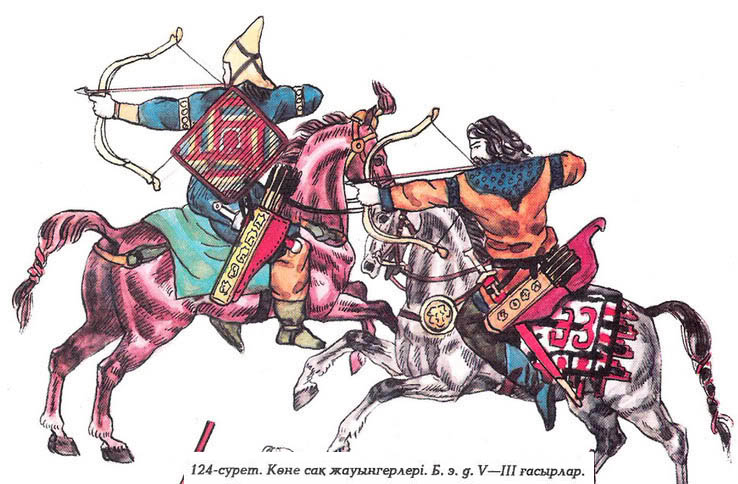
.jpg)
.jpg)
.jpg)
.jpg)
.jpg)
.jpg)
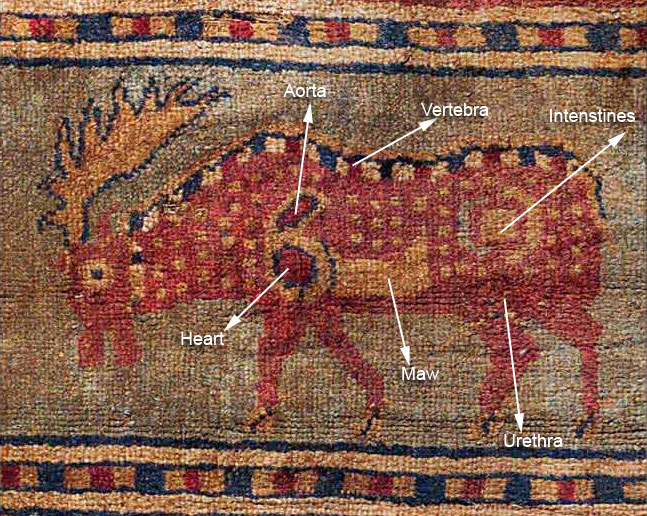
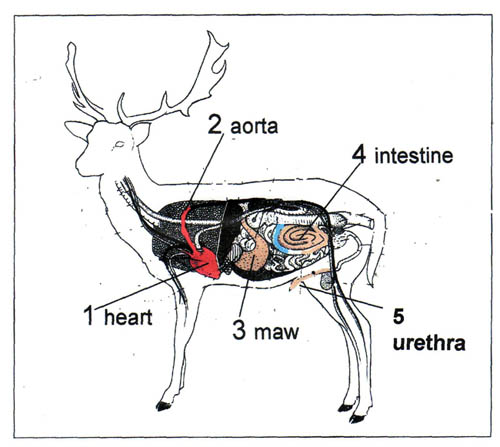


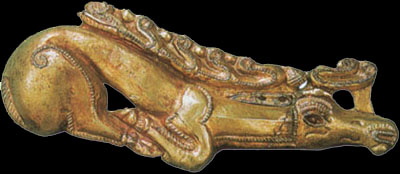
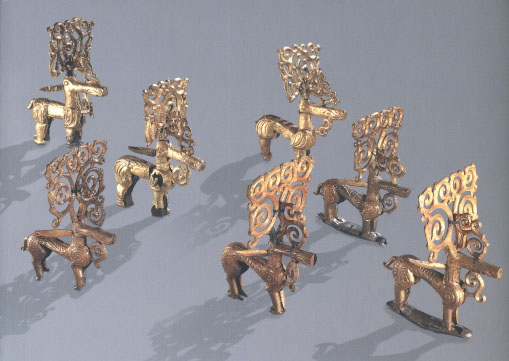
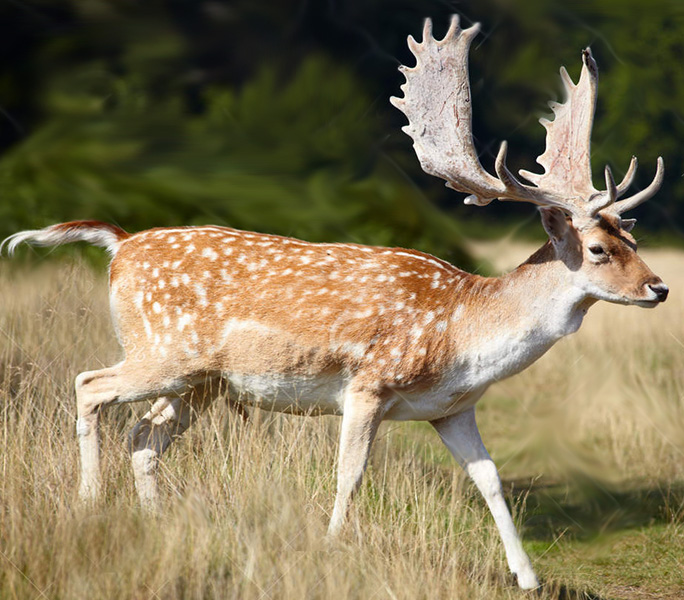
.jpg)
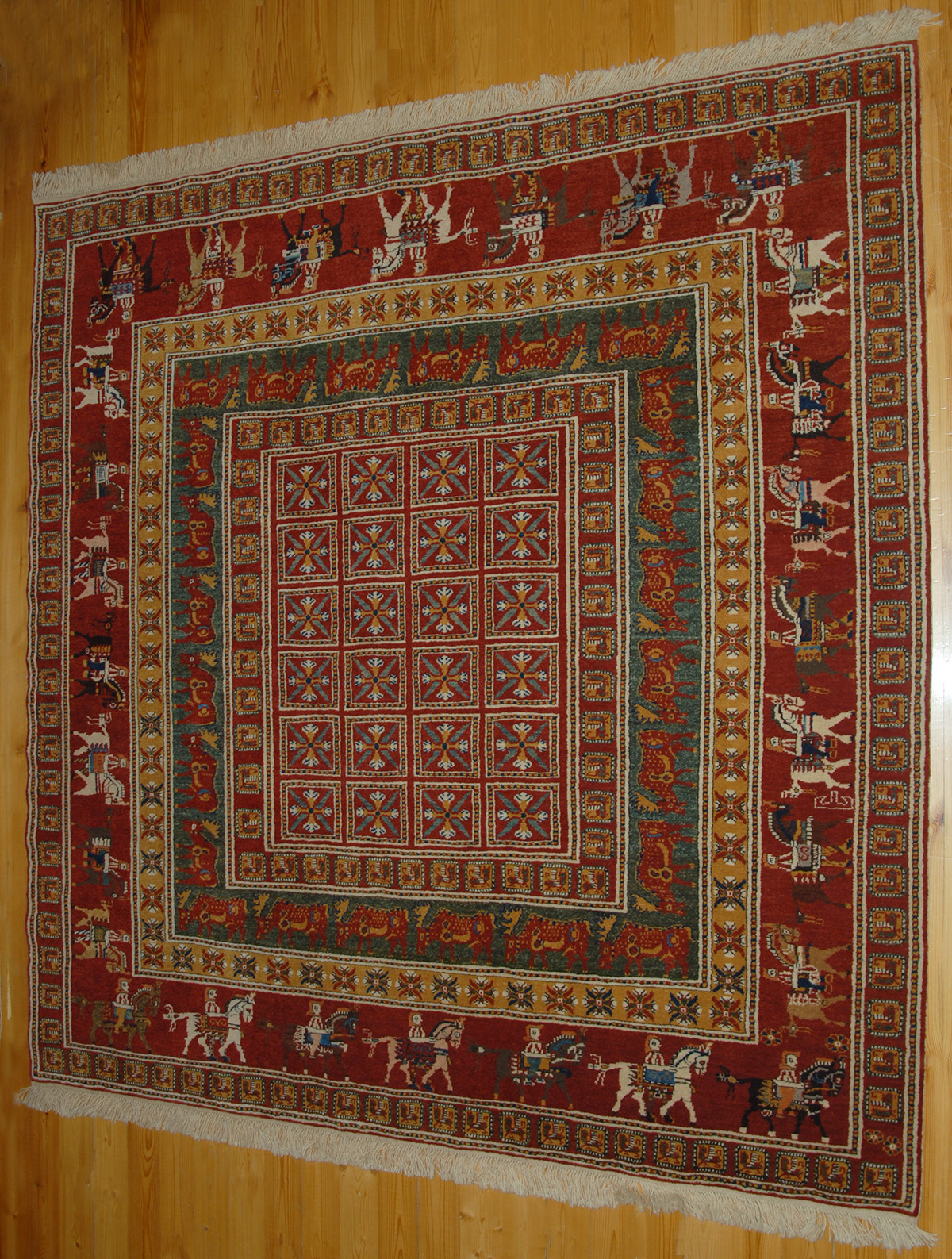
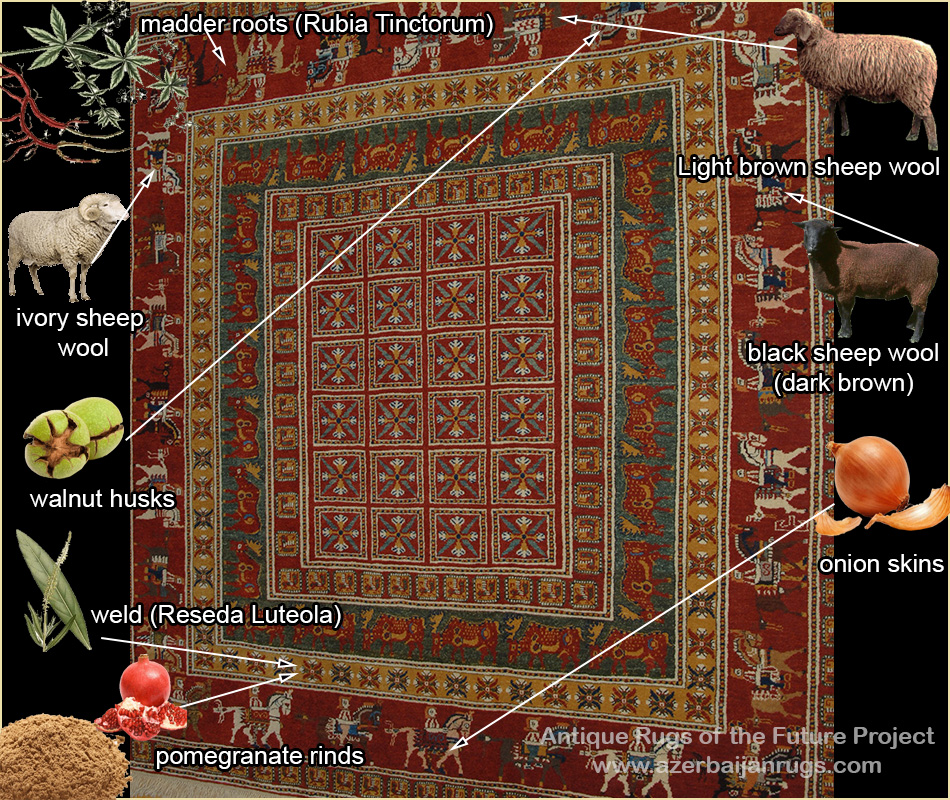
.jpg)
.jpg)
